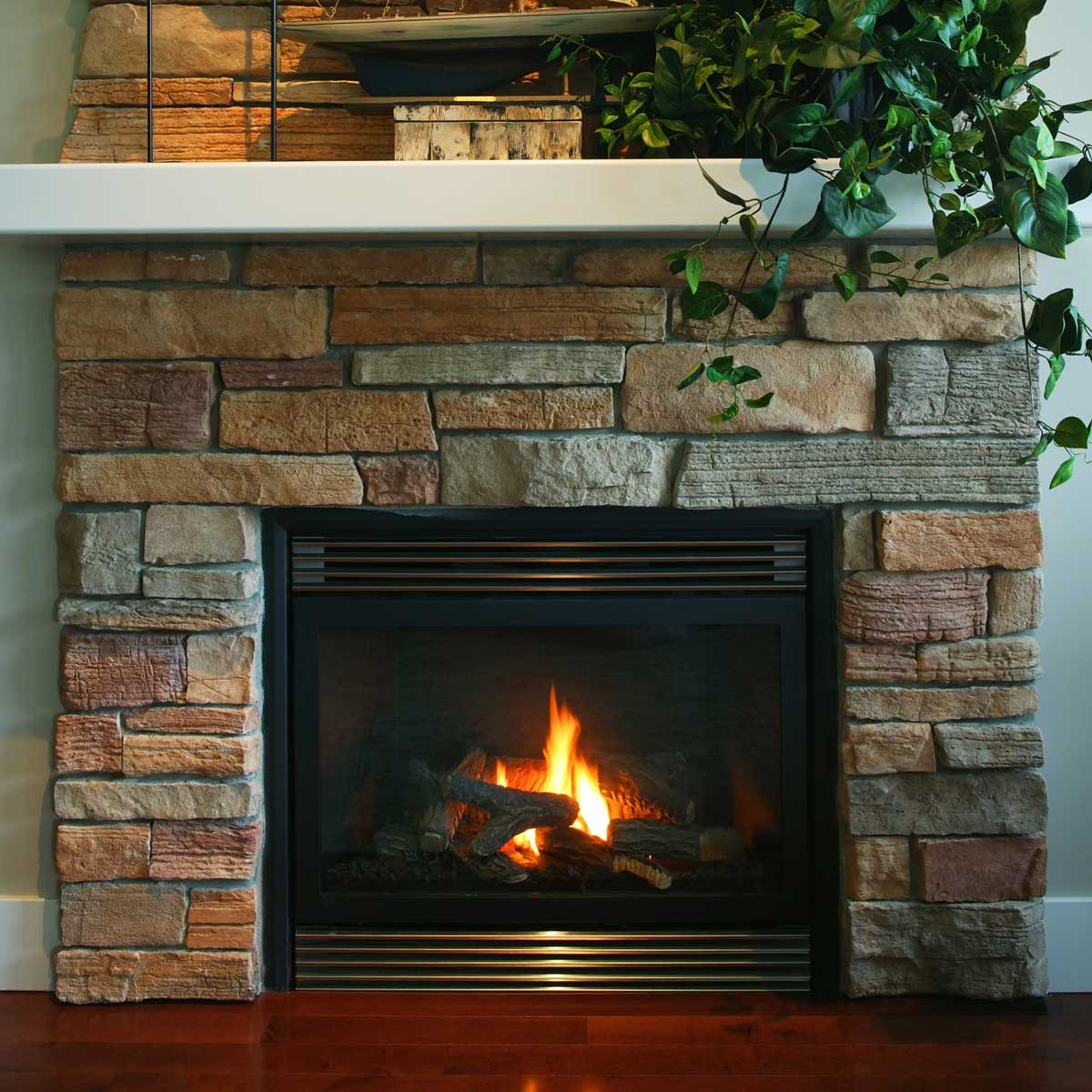Tired of dealing with the constant mess and maintenance of your wood-burning fireplace? Consider whether a gas fireplace insert is right for you.

Guide to Gas Fireplace Inserts

More than one-third of U.S. homes use a secondary heat source, with fireplaces among the most common. Unfortunately, wood-burning fireplaces come with unique problems — constant upkeep and maintenance, air pollution and the risk of house fire.
Those issues, combined with the affordability and efficiency of propane and natural gas, are leading more Americans to switch to safer and more environmentally-conscious alternatives. While replacing an existing fireplace can be an expensive undertaking, installing a gas fireplace insert may be a much easier and affordable option. If you’re interested in converting your wood-burning fireplace to a gas-powered unit, read on to discover if a gas fireplace insert is right for you.
On This Page
What Are Gas Fireplace Inserts?
Gas fireplace inserts are gas-powered heating elements designed to fit inside an existing wood-burning fireplace. They produce flames like a wood-burning fireplace, but they’re safer to use, more environmentally friendly and more heat efficient than wood fires. Inserts can be fueled by natural gas or propane, and are tied into your home’s existing gas supply line. Also, learn how to light a gas fireplace.
Types of Gas Fireplace Inserts
There are two types of gas fireplace inserts: direct-vent and ventless
- Direct-vent systems are more expensive and slightly less energy efficient. But they’re safer to use than ventless units because the combustion gases are expelled outdoors through a vent pipe.
- Ventless systems are more affordable and energy-efficient, but they pose the potential risk of depleting indoor oxygen levels. For this reason, ventless systems are illegal in many states and jurisdictions, even when equipped with oxygen depletion sensors that detect dangerous declines in indoor air quality.
Pros and Cons of a Gas Fireplace Insert
Pros
- Can be installed in an existing fireplace.
- Requires minimal upkeep and maintenance, in contrast to constantly removing ash and cleaning your chimney annually.
- No risk of chimney fires from creosote buildup.
- You can start a fire with the push of a button instead of building a wood fire.
- Doesn’t require processing, purchasing or storing firewood.
- They’re more environmentally friendly and burn with a 65 to 99 percent efficiency rating. By contrast, wood-fueled fireplaces burn with a 15 to 30 percent efficiency rating.
Cons
- Gas inserts don’t offer the same ambiance as wood-burning fireplaces, i.e. the smell and sound of burning wood.
- Units can be expensive.
- They can be difficult and expensive to install, so you will likely need to hire a contractor. Many gas insert manufacturers require professional installation to validate their warranty.
- Depending on the cost of firewood and gas in your area, gas (especially propane) may be more expensive than wood.
What To Know Before Purchasing a Gas Fireplace Insert
Besides researching the cost, if you plan to use the insert as a supplemental heat source, determine the heat output your unit will need to heat your home. Gas fireplace inserts can cost between $400 and $3,500, depending on the power rating and additional features.
On top of that, installation typically runs between $400 and $3,000, depending on the difficulty of installing the gas, electrical and ventilation lines, and whether it’s a direct-vent or ventless unit. Because installation requires advanced skill and expertise, don’t attempt the gas fireplace installation on your own unless you have considerable experience.
To figure out the heat output the unit will need (measured in British Thermal Units, or BTUs), multiply the square footage (length x width) of the area you want to heat by the BTU requirements of your climate zone.
Homes in Zone 1 need 30 to 35 BTUs per square foot of space, Zone 2 needs 35 to 40 BTUs, Zone 3 needs 40 to 45 BTUs, Zone 4 needs 45 to 50 BTUs and Zone 5 needs 50 to 60 BTUs. So to bring zoned heating to your 300 square foot living room, you will need at least 9,000 BTUs if your home is located in Zone 1 (300 x 30), 10,500 BTUs for Zone 2 homes (300 x 35), etc.
Although not as common, some people with smaller homes (400 to 1,000 square feet) may use their fireplace as their primary source of heat. You can use a similar calculation if your insert will be your primary heat source, but you need to factor in the height of your ceilings (because heat rises) and how well your home’s envelope (outer walls, doors, windows and other areas exposed to the outside) is sealed and insulated.
It’s always best to get professional guidance when trying to determine the right heat output for your home, especially for the primary heat source.
Additional Features to Consider
Along with your expectations for an insert’s role as a heat source, these features that can give it added functionality:
- Wall thermostats to automatically adjust the heat output to your desired specifications.
- Flame height adjustment to customize the visual effect and heat output. Depending on the unit, you can adjust the flame height from 30 to 100 percent flame production.
- Remote control to adjust the heat output and flame height from anywhere in the room.
- Automatic shut-off timer for energy conservation.
- Although not as common, there are Smart fireplace inserts that let you control the timer and the heat and flame outputs from a phone app instead of a wall-mounted display or hand-held remote. Some apps can be integrated with Amazon Alexa and Google Assistant for voice commands.
- A blower to help circulate the heat throughout the room.
- Battery backups to keep the unit running during power outages.
- Decorative log sets, glass chips or stones for added aesthetic appeal.



















